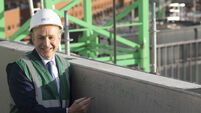Is Lego sexist?
AH, Lego. Loved by children and adults and despised by bare feet for generations and generations. But it is, undeniably, a universally popular and endlessly enduring toy. Who could have thought that what started out in Denmark 60 years ago as a one man business making plastic bricks in a shed would have expanded into a company with 600 employees and with Legoland theme parks in Britain, Germany and the US as well as the original in Billund, Denmark. It’s an incredibly successful toy story.
As a brand, Lego has had a relatively unchequered past with very few, if any, bad PR moments. That is, until the recent announcement of the launch of its new range, Lego Friends, which is aimed specifically at young girls. Unexpectedly, the innocent, four-years-in-the-making, Lego Friends world of Heartlake City has provoked accusations of gender-stereotyping among Lego fans and parents. Bloggers are writing impassioned posts about the inherent sexism in the new range. The Lego Facebook page has been deluged with hundreds of negative comments and protestations about the range and has been accompanied by a viral campaign to forget the pink aisles and new girl figures with breasts, bring back beautiful, ! a snipe at Lego’s own 1981 ad campaign which shows a little girl proudly holding her Lego construction with the slogan What it is, is beautiful.
















